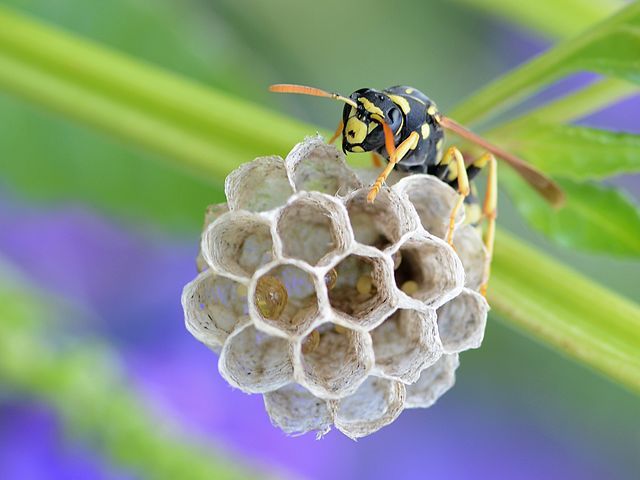-- Pest Library --
Paper Wasp
Paper Wasp Description
The queen paper wasps are about 3/4 inch long, and the workers on average about 1/2” long. Their bodies are slender and often have long legs that can be seen dangling during flight. Paper wasps have a very distinct narrow waist and appear smooth or hairless. Paper wasps are typically dark brown, orange or reddish in color, or can be banded with yellow and black (similar to yellow jackets).
Diet
Paper wasps feed on sweet nectar and other soft-bodied insects.
Life Cycle & Reproduction
Paper wasps are considered semi-social insects. The colonies make up three castes, the workers, queens and males. Fertilized queens, which appear very similar to the workers, overwinter in protected habitats such as cracks and crevices in structures and under tree bark. In the spring the queens choose a new nesting site and begin building a nest. Eggs are then laid singly in cells and hatch into legless grub-like larvae that will develop by going through several stages (instars) before pupating. In the fall, the (mated) female offspring of the queen seek out overwintering sites so they can survive the harsh utah winters. The remainder of the colony does not survive the winter.
Habitat
Nests are built from wood fiber collected from posts and occasionally from live plant stems. This fiber is chewed and formed into a single paper-like comb of hexagonal cells. Nests are oriented downward and are suspended by a single filament. Mature nests contain up to 200 cells. They actively forage during the day and all colony members rest on the nest at night. Paper wasps will hang their comb nests from branches, twigs and shrubs. Most often, if these nests are approached or tampered with, they will sting. You also see nests hung from windows, door frames, eaves, attic rafters, decks, and railings. Overwintering queens will start new nests on almost any structure or small cavity, including trees, rocks, wood, playground equipment, and buildings.
Threat
Paper wasp nests are commonly found around or underneath eaves, in or on structures and even on plants. Wasps will attack if they feel threatened or if their nest is disturbed. Wasps can sting repeatedly; stings typically cause localized pain and swelling, but if a person is sensitive or if many stings occur (as with most arthropod stings) whole body (systemic) effects may occur, including severe allergic reactions and even death.










